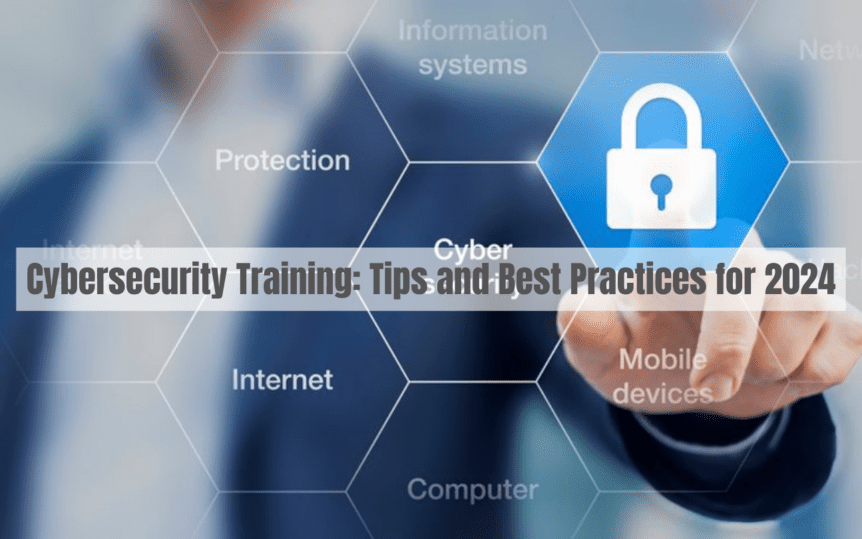Cybersecurity Training: Tips and Best Practices for 2024
The world is becoming more digitalised and digitally connected. One of the less appealing consequences of this increased connectivity is a rise in cyberattacks and the corresponding growth of cybersecurity risks in companies across all industries. This is making cybersecurity training more important in 2024 than it has ever been before.
You need to put in place technical and physical measures to improve your organisation’s cybersecurity, but the people on your team are also a crucial component. Cybersecurity in your organisation is only as strong as the weakest link and in many organisations, the weakest links are people.
You only have to look at the costliest types of cyberattacks to recover from. They include compromised emails, phishing scams, social engineering, and compromised credentials, i.e., they are all types of attacks where a person is tricked, makes a mistake, or doesn’t take cybersecurity seriously enough.
So, cybersecurity training is essential, but how do you make sure the training is as effective as possible? How do you get a good return on investment and how do you ensure the training delivers higher levels of security? The following tips and best practices are good places to start.
Establish Robust and Modern Cybersecurity Policies and Protocols
Don’t start creating training courses and content until you have developed robust cybersecurity policies and protocols. Those policies and protocols should also be modern and based on the latest advice and best practices.
For example, there are many in the cybersecurity industry who believe that making users change their passwords on a regular basis weakens rather than strengthens security. There are also new technologies that assist with password security, including multi-factor authentication technologies. It is important the guidance and advice for users on passwords and all other cybersecurity issues are clear before training is created.
Cybersecurity Training Should Be Ongoing
One of the most important points to be aware of when considering cybersecurity is that there is no endpoint. The attack surface in your organisation is constantly increasing, there is a continuous movement of people as staff leave and new staff are hired, and the threat landscape constantly evolves as criminals and other malicious actors develop new ways to compromise systems and/or get access to data.
There are other reasons as well, but for these three reasons alone, cybersecurity training should be an ongoing focus in your organisation.
Include Contractors and Partners
One mistake that companies often make with cybersecurity training is that they only focus on employees. Contractors and partners can also often have access to systems and data, so they should receive training too.
Understanding of Risk
In terms of the content of the training courses you develop, it is essential to ensure each employee understands the level of risks that are involved and the role they can play in mitigating those risks. After all, for some employees, cybersecurity is not something they think about very often, if at all. Increasing awareness and knowledge across the entire organisation is beneficial.
Make the Training Current and Relevant
As mentioned in a previous point, the threat landscape is constantly changing. Not only that, but cybersecurity best practices are also continuously evolving. Therefore, it is necessary to make sure the training you develop is current.
As with other training in your organisation, cybersecurity training should be relevant, so it makes sense to the employee, particularly in relation to how the content relates to them.
Include Examples
One way to make cybersecurity training relevant is to include examples, focusing especially on the types of attacks where criminals target people. Phishing emails and social engineering tactics are two examples. Including examples will make the training more real to the employee, as phishing and social engineering tactics can be hard to grasp as theories alone.
Facilitate Practice
Giving employees an opportunity to practice is another important part of cybersecurity training. E-learning courses are especially good in this regard, as you can create activities and other elements that allow employees to experience a cyberattack in a completely safe environment.
Tailor the Training According to Risk
While a certain level of risk is attached to most, if not all, of the employees in your organisation, the risks are not universal. Therefore, it is helpful to tailor cybersecurity training so those who face the highest levels of risk receive the most comprehensive and detailed training.
Include Cybersecurity in Onboarding Training
Including cybersecurity in onboarding training helps establish the importance of the issue as soon as possible, while also giving new hires the information, guidance, and advice they need.
Establish an Open Learning Culture
Finally, it is beneficial to establish a culture where you learn from mistakes and near misses. The priority should be collaboration and learning, not blame and punishment.
Continuous Improvement and Learning
The people in your organisation will have differing levels of cybersecurity knowledge and technical capabilities. Your aim initially should be to bring everyone up to a baseline level and then throughout 2024 build on that foundation. This will keep cybersecurity at the forefront of people’s minds while also improving skills and knowledge.
